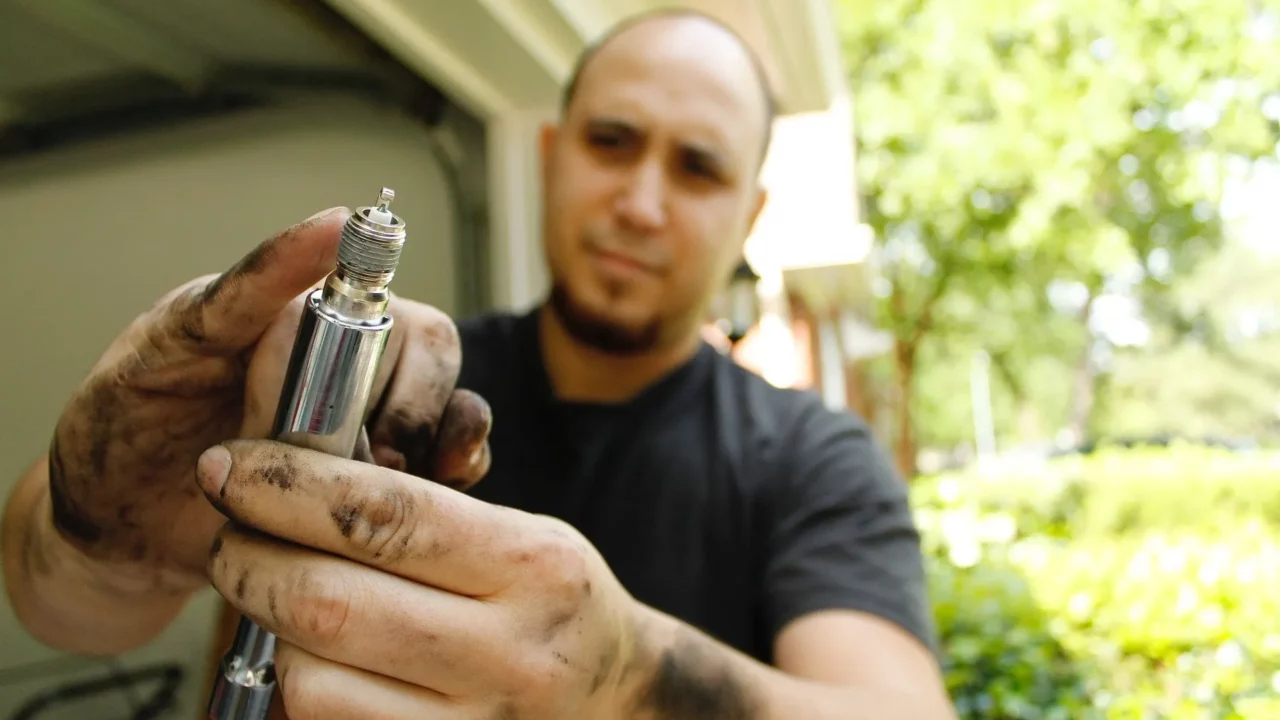
Should You Use Copper Grease/Slip/Anti-Seize on Spark Plug Threads?
With it being one of the most asked questions on the Internet when it comes to spark plug changes, we wanted to make things far clearer. With even walk-in stores trying to use this as a tactic to sell their copper grease products, we dig to reveal the truth. So what is actually correct and what’s wrong?
The Correct Answer
Virtually all spark plugs now feature a special anti-seizure nickel or zinc-chromate shell plating. Basically, you can think of the plating as a replacement of thread compound or copper slip. Here’s what NGK says:
“NGK spark plugs feature what is known as ‘trivalent plating’. This is a silver-or-chrome coloured finish on the threads that is designed to provide corrosion resistance against moisture, chemicals and weathering. The coating also acts as a release agent during spark plug removal. NGK spark plugs are installed at the factory dry, without the use of anti-seize. NGK tech support has received a number of tech calls from installers who have over-tightened spark plugs because of the use of anti-seize. Anti-seize compound can act as a lubricant altering torque values up to 20 percent, increasing the risk of spark plug thread breakage.”

Why Do Torque Values Change With Copper Slip?
The reason is because there’s less friction between the two materials and far more force can be applied into the plugs preload when using thread compound or copper grease. The preload is the ‘tension’ between the plug and cylinder head threads that gives the friction force to stop them coming loose. You will end up over-tightening them by up to 20% which is easily enough to break them if using an anti seizure agent. This goes for anything and everything to do with torque-wrenches, always use torque specifications ‘dry’ unless stated otherwise.
In Our Experience
For NGK warranty purposes, we have to ship all damaged spark plugs back to NGK UK so that they can be officially examined and documented. As of now, it turns out 100% of the spark plugs in the last 5 years that were returned due to thread breakage were the result of customers using thread compound, or simply over tightening them. The NGK warranty reports are always compiled with detailed photographs pinpointing the exact reasons for failure, even to the very smallest of details such as hex swelling and magnified photos are taken and recorded.
But I Know a Mechanic Who Always Uses it on Spark Plugs?
If your mechanic uses copper grease on spark plug threads well as torquing them down, then be warned! NGK is adamant this procedure should be avoided on all costs. We must remember that the spark plug manufacturers are the most experienced out of all of us, with millions of pounds spent on R&D and hundreds of qualified mechanics testing them day in, day out.

NGK Tech Bulletin
NGK released an official tech bulletin to all suppliers about the issue with copper slip.


Quick Spark Plug Installation Guide
1. Locate the spark plug ignition coils/HT leads and remove them by pulling upwards.
2. Blow away any debris from the plugs recess area using compressed air (or a can of compressed air), and carefully undo the old spark plugs with the correct sized socket that is specifically made for spark plugs. These sockets are usually much longer than standard sockets and include a rubber grommet inside to grab onto the spark plug so they can be pulled up and removed. If they feel seized, slowly work them loose/use heat. Try not to use penetrating lubricant as once the plugs are removed any dirt and fluid can run into the cylinder chambers.
3. After removing the old spark plugs, check the condition and cleanliness of the cylinder head threads, if they’re dirty then this can lead to inaccurate torque wrench readings, it is paramount however that care must be taken so no dirt falls into the cylinders. Spray some brake cleaner onto a clean rag/kitchen roll and wipe them over the threads to remove any grease or dirt.
4. Ensure the plug is gapped according to the vehicle manufacturer’s specification. Multi-ground electrode and precious metal plugs (iridium, platinum tip etc) should not be re-gapped due to risk of damaging the fine tips. If you used the NGK part finder website and purchased the plug according to what the results gave, the gap should already be correct unless the part finder states to change it.
5. Warning – Do NOT apply copper grease/slip or anti-seize to the plug threads, copper grease is only for used on old fashioned black spark plugs which don’t feature a corrosion-resistant zinc plating.
6. Install new spark plugs and finger tighten them until they stop – A length of rubber tubing pushed over the insulator a useful aid for plug installation where access is difficult.
7. If you have a torque wrench, tighten them to the specified torque setting in the table below. Make sure your torque wrench has the correct load ranges and that it has a calibration certificate, spark plug torque settings are reasonably low so a smaller wrench will be necessary. Note the following:

6. If a torque wrench is unavailable then finger tighten and follow the guide below:

7. If your engine has the more modern ‘COP’ system (coil-on-plug) then lube the spark plug boot with dielectric grease, this helps prevent misfires and makes removing easier in the future.
8. Fire up the engine and listen to that sweet symphony!



